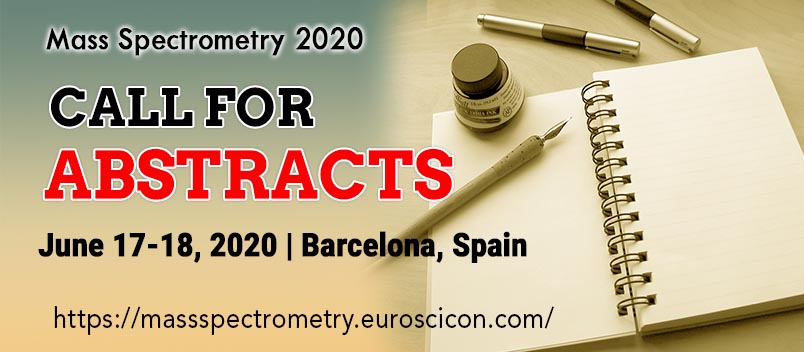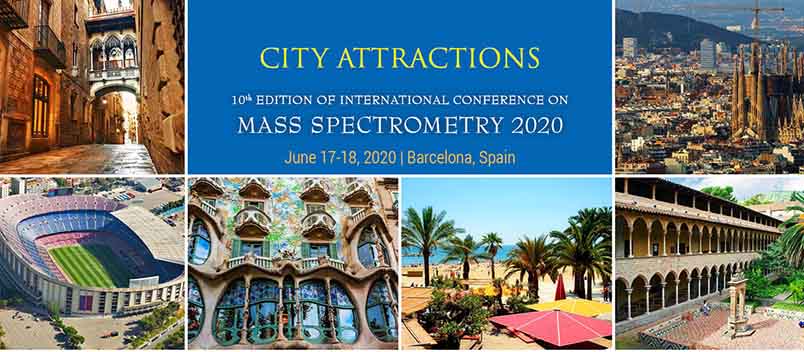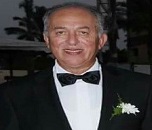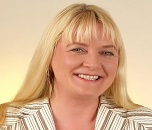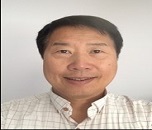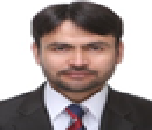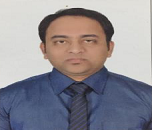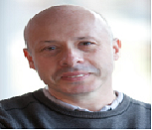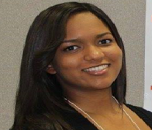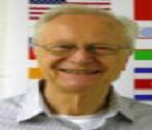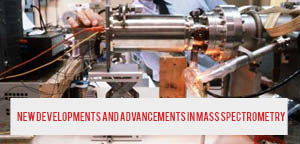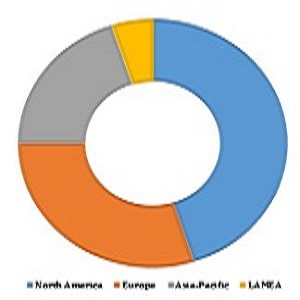Mass Spectrometry 2020
About Conference
EuroSciCon invites you to join the 10th Online Edition of International Conference on Mass Spectrometry during June 17-18, 2020, Webinar. We warmly request all the participants who are interested in sharing their knowledge in “Current Trends in Mass Spectrometry, Chromatography, HPLC and Proteomics”. Mass spectrometry is instrumental tool used in recognizing the mass of the molecules and molecular building blocks.
Why to attend our conference
This event will provide an opportunity to build and expand your network with various people and gives chance to make collaboration with other universities and research labs. It also helps you to meet the experts in the relevant field of study. It gives the access to novel instruments in the market. This conference plays a major role in your business development and maximizes the profit.inar
Target Audience
Target audience for Mass Spectrometry 2020 Includes
The conference welcomes all the Eminent leaders and Professors of chemistry to share their research work and experiences, we are open for all the scientists from all over the globe with their new findings. We encourage young researchers, students to participate and share their ideas in the conference. We are also honor to welcome Directors, Vice President, Head of technology from industries, R&D Chemist, Life Sciences Specialist, and Exhibitors are also welcoming to exhibit their projects and products.
Opportunities for Conference Attendees:
- Speaker Presentations
- Poster Display
- Symposium hosting
- Workshop organizing
For Universities, Associations & Societies:
- Association Partnering
- Collaboration proposals
- Academic Partnering
- Group Participation
For Students & Research Scholars:
- Poster Competition (Winner will get Best Poster Award)
- Young Researcher Forum (YRF Award to the best presenter)
- Student Attendee
- Group Registrations
- Speaker Presentations
- Audience participation
- Symposium hosting
- Book Launch event
- Networking opportunities
- Exhibitor and Vendor Booths
- Sponsorships opportunities
- Product launch
- Workshop organizing
- Scientific Partnering
- Marketing and Networking with clients
Sessions / Tracks
1.New Developments and Advancements in Mass Spectrometry
Mass Spectrometry is important Chemical analysis method. Mass Spectrometry is a various application in the field of chemistry and pharmaceutics. In pharmaceutical Industry and drug analysis and Mass Spectrometry development is more. Molecular mass of a compound is important in determination of Character of a compound. In treatment of cancer mass spectrometry paly a important role. SimGlycan is software which use for evaluation for Mass spectrometry.
2. Applications in Mass Spectrometry
Mass spectrometry is a powerful analytical technique with a of different applications in biology, chemistry, and physics. It uses for evaluation of protein sequence, cell structure, Analysis of Glycans, Lipids, Proteins and Peptides, Oligonucleotides, organic chemistry, polymer chemistry, evaluation of structure, it has application in disease characterization and biomarker investigations, examination of ionic-molecular interactions, determination of the abundance of isotopes in nature and in atomic reactions, determination of the atomic masses of stable and radioactive isotopes, examination of surfaces and modification of surfaces, ion implantation, Geology and Cosmology, especially age determination, Examination of the upper atmosphere and space research.
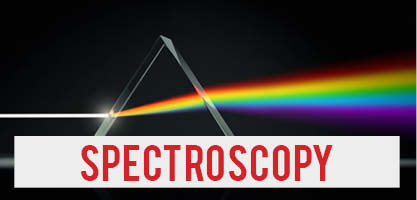
Spectroscopy is technique of the interaction between matter and electromagnetic radiation. Different type of spectroscopy is there X Ray photoelectron spectroscopy, Infrared absorption spectroscopy, Ultraviolet and visible absorption spectroscopy, Nuclear magnetic resonance spectroscopy, Raman spectroscopy. Spectroscopy in Biomedical Sciences uses in astronomy, Sensitivity and selectivity.
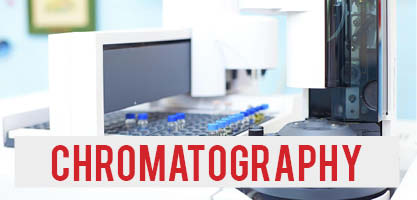
Chromatography technique of separating the chemical substances into its individual components. Various type of chromatography is there Column chromatography, Ion-exchange chromatography, Affinity chromatography, Paper chromatography, Thin-layer chromatography, Gas chromatography. In Chemical industry chromatography is an important technique has lot of application. Chromatography has lot of application in food industry, Forensic Science, Molecular Biology Studies, Polymer Synthesis, Bioinformatics.
5. Proteomics
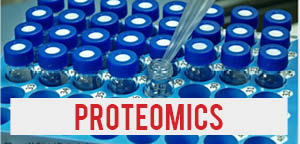
Proteomics is the large-scale study of proteins and proteomes.Proteins are vital parts of functional living organisms, Proteomics refers to the large-scale experimental protein purification and mass spectrometry analysis.Proteomic technologies is use for identiï¬cation and quantiï¬cation of overall proteins present content of a cell, tissue or an organism.Mass spectrometry with LC–MS-MS and MALDI-TOF/TOF being widely used equipment is the central among current proteomics.Proteomics is also useful in disease diagnosis, gene function, chromatography, electrophoresis, Quantitative techniques, crystallography, Bioinformatics analysis.

Analytical Chemistry is the science of obtaining, processing, and communicating information about the composition and structure of matter. Analytical Chemistry studies and uses instruments and methods used to separate, identify, and quantify matter. In practice separation, identification or quantification may constitute the entire analysis or be combined with another method. Separation isolates analytes. Qualitative Analysis identifies analytes, while Quantitative Analysis determines the numerical amount or concentration. Analytical chemistry consists of classical, wet chemical methods and modern, instrumental methods. Classical qualitative methods use separations such as precipitation, extraction and distillation. Identification may be based on differences in color, odor, melting point, boiling point, radioactivity or reactivity. Classical quantitative analysis uses mass or volume changes to quantify amount. Instrumental methods may be used to separate samples using Electrophoresis or field flow fractionation. Then Qualitative and Quantitative analysis can be performed, often with the same instrument and may use light interaction, heat interaction, electric fields or magnetic fields . Often the same instrument can separate, identify and quantify an analyte. Analytical chemistry is also focused on improvements in experimental design, chemo metrics, and the creation of new measurement tools. Analytical chemistry has broad applications to forensics, medicine, science and engineering.

Capillary electrophoresis analysis of peptide/proteins. Capillary is a small tube which place between two buffer reservoirs after that electric field applied separation depend on electrophoretic mobility and electro osmosis. It uses for purity and structural confirmation to a micro preparative technique, Hemoglobin electrophoresis, DNA sequencing, analysis of polymorphism, Forensic application. CE-MS combines advantages of both CE and MS to provide high separation efficiency and molecular mass information in a single analysis.
8. Mass Spectrometry Instrumentation

A Mass Spectrometer generates multiple ions from the sample under investigation, it then separates them according to their specific mass-to-charge ratio (m/z), and then records the relative abundance of each ion type. The instrument consists of three major components. Ion Source, Analyzer, Detector System. A Mass Spectrometer should always perform the following processes:
Produce ions from the sample in the ionization source Separate these ions according to their mass-to-charge ratio in the mass analyzer Eventually, fragment the selected ions and analyze the fragments in a second analyzer Detect the ions emerging from the last analyzer and measure their abundance with the detector that converts the ions into electrical signals Process the signals from the detector that are transmitted to the computer and control the instrument using feedback.
9. Mass Spectrometry in Pharmaceutical Industry
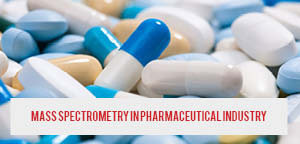
Mass Spectrometry is a powerful method in pharmaceutical industry. Pharmaceutical industry they discovers the drug and develops, produces for use as medications. Mass Spectrometry is drug analysis method. By analysis the method we check the strong ness of the drug. Mass Spectrometry is a various application in drug metabolism, Pharmacokinetics and Pharmacody, preclinical and clinical development.
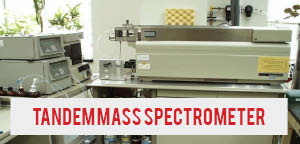
Tandem Mass Spectrometry involves many stages to break down selected into fragments. There are different type tandem mass spectrometers are there triple stage quadrupoles, quadrupole/time-of-flight, quadrupole-linear ion trap hybrid instruments, time-of-flight-time-of-flight. It uses in Peptides sequencing, Oligosaccharides sequencing, glycolipids sequencing.
11.Mass Spectrometry Applications in Organic Chemistry
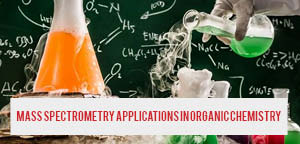
Organic Chemistry is a brunch of chemistry related with structure properties, and reactions of organic compound and materials. Mass Spectrometry is use of analysis molecular mass of higher energy organic compound. Mass Spectrometry is use to determine the stature of natural product, organic compound, which is helpful in chemical reaction.
12. Mass Spectrometry Applications in Clinical Diagnostics

Now a days Mass Spectrometry is use in evolution of elements composition, determine the mass of the compound. In clinical diagnosis it uses for disease screening, diagnosis of disease and metabolic disorders, identifying drug toxicity and poisoning, monitoring of drug therapy, discovering new biomarkers. traditional clinical analysis systems, medicaments. Quantitative Excellence for Assays.
13. Mass Spectrometry in Environmental Analysis
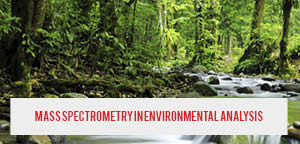
Environmental Analysis is referring the part of chemistry which is related with environment. The process examines all the internal or external components, which has an influence on the performance of the organization. The steps involved in environmental analysis identifying, Scanning, Analyzing, Forecasting. Mass Spectrometry is a technical platform for analysis of environmental chemicals. It helps in several ways Protect Human Health by Detecting Environmental Contaminants, Persistent Organic Pollutants, Emerging Contaminants, From Emerging to Emerged.

Protein Mass Spectrometry is related with identification of protein. There are two method of ionization of electrospray ionization and matrix assistant laser desorption. Protein synthesis is important in human life. Protein molecule are work as catalyze in biochemical reactions. Hormones are a kind of protein that make connection between cell to cell and regulated the body function. Mass Spectrometry help to protein synthesis. That has lot of function in human body.
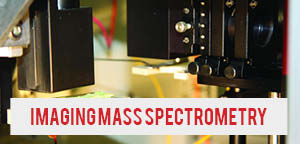
Imaging Mass Spectrometry is a technology that combines most advanced analytical techniques for the analysis of biological molecules with spatial fidelity. An effective approach for imaging biological specimens in this way utilizes Matrix-Assisted Laser Desorption Ionization Mass Spectrometry. The mass-to-charge ratio of the ions are measured using a Mass Spectrometer over an ordered array of ablated spots. Imaging Mass spectrum Analysis (IMS) encompasses a spread of techniques that change the chemical imaging of analytes from atoms and little molecules to intact proteins directly from biological tissues. Imaging Mass Spectrometry is remodeling specific areas in research project with its distinctive combination of chemical and biological information. Innovations in instrumentation and imaging protocols can create this approach at several stages of the drug discovery method, as well as medical target screening and evaluating the distribution of drug and drug metabolites in cells and tissues.
16. Spectroscopic Methods in Separation Techniques
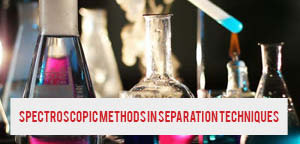
The study of communication between particles and electromagnetic radiation where the involvement of scattering, absorption, reflection or transmission of materials take place. The intensity of interaction connections in these materials gives the data about the physical properties of the substances. This track deals with various spectroscopy techniques which act as a basic analysis before separation.
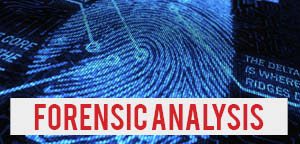
Mass Spectrometry in Forensic Analysis is a technology provides a powerful tool for Forensic studies. For forensic researchers investigating their samples for unknown compounds, drug metabolites, chemicals or hazards, novel psychoactive substances that have never been previously detected or characterized. The role of Mass Spectroscopy in forensic science may be characterized as either molecular or elemental analysis. comparatively little volatile nonionic molecules found in a very sort of forensic samples may be analyzed with electron and chemical ionization of single-stage mass analyzers that give relative molecular mass and structural data. Non-polar and polar molecules and their metabolites habitually found in biological matrices along with alternative analytes of forensic interest may be determined by using Electrospray.
18. Ionization Techniques Mass Spectrometry
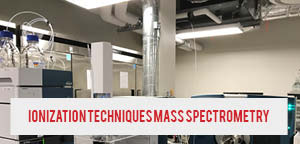
In Mass Spectrometry analysis many ionization techniques are there mainly electron impact (EI) and Fast Atom Bombardment (FAB). Now-a-days it not used to much but environmental analysis it is used in checking the atmospheric pressure. In environmental analysis it has lot of application. It also used in Qualitative and quantitative applications, check the purity of the sample, evaluation of organic and inorganic biological molecule, determination of mass of peptides, protein.
19. Mass Spectrometry in Medicine
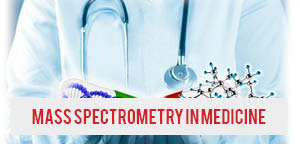
Mass Spectrometry in medicine is the most important area to study for the development of medicines. Mass Spectrometry is an analytic technique widely used many laboratories for the development of laboratory medicine. Various types of Mass Spectrometers are used in order to get improvements in assay performance that is occurring rapidly in areas such as toxicology, endocrinology, and biochemical genetics. Mass Spectrometry is a diagnostic system with high specificity and developing vicinity in research facility prescription. Different sorts of Mass Spectrometers are being utilized as a part of an expanding number of clinical research facilities all around the globe. Mass Spectrometry has contributed altogether to the development of restorative science in early decades, especially in connection to medication advancement, in-vitro diagnostics, dietary and natural drug.
20. Pharmacokinetics
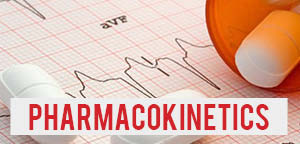
Pharmacokinetics is branch of pharmacology which studies how an organism can effect a drug. it is to determine the fate of substances administer to living organism. The substance includes any chemical xenobiotic, pharmaceutical drugs, pesticides, food additives, cosmetics. It has various compartments and the model is LADME.
21. Data Analysis and Experimentation in Mass Spectrometry
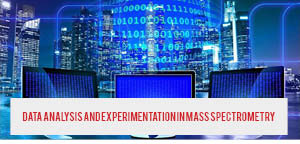
Mass spectrometry helps in high accuracy measurements which requires a small amount of sample of molecules by their mass-to-charge ratio. It is structural proteomics techniques. Mass spectrometry-coupled methods can provide information about conformation and dynamics of substances. It is the combination of modifications, identifications, molecular biology analysis and other techniques can be involved in the experimentation techniques.
Past Conference Report
Mass Spectrometry 2019 Report
The 9th Edition of International Conference on Mass Spectrometry was held on March 04-05, 2019 in Berlin, Germany with the presence of professional researchers, scientists involved in the development of high-quality education & research in all aspects.
Mass Spectrometry 2019 witnessed an amalgamation of peerless speakers who enlightened the crowd with their knowledge and confabulated on various topics related to the field of Mass Spectrometry. The highly exalted conference hosted by EuroSciCon was marked with the attendance of renowned and brilliant researchers, business delegates and talented student communities representing more than 20 countries around the world. The conference has tried grounding every aspect related to Mass Spectrometry, covering all the possible research areas.
The conference aimed a parallel rail with theme “Current Trends in Mass Spectrometry, Chromatography, HPLC and Proteomics”. The meeting engrossed a vicinity of cognizant discussions on New Advances and Development in Mass Spectrometry, Mass Spectrometry Applications, Mass Spectrometry Applications in Pharmaceutical Industry, Spectroscopy, Mass Spectrometry Applications in Clinical Diagnostics, Capillary Electrophoresis, Chromatography, Tandem Mass Spectrometry, Maas Spectrometry in Environmental Analysis, Protein Mass Spectrometry, Ionization Techniques Mass Spectrometry, Mass Spectrometry Instrumentation, Forensic Analysis, Mass Spectrometry in Medicine, Imaging Mass Spectrometry, Analytical Chemistry. The two days event implanted a firm relation of upcoming strategies in the field of Mass Spectrometry with the scientific community. The conceptual and applicable knowledge shared, will also foster organizational collaborations to nurture scientific accelerations.
We are thankful to all our speakers for encouraging and supporting us to conduct the conference and catapulting the same to pinnacle of success. The Organizing Committee would like to thank the moderator: Petra Perner, Institute of Computer Vision and Applied Computer Sciences, Germany for his valuable contribution which resulted in smooth functioning of the conference.
The meeting was embarked with an opening ceremony followed by Keynote Sessions and followed by series of lectures delivered by Honorable Guests and members of the Keynote forum. The highlights of the meeting were the eponymous lectures, delivered by:
Mahmoud Rafea, Zrythra Inc, USA
Petra Perner, Institute of Computer Vision and Applied Computer Sciences, Germany
Milos Netopilik, Institute of Macromolecular Chemistry, Czech Republic
Yong-Nam Pak, Korea National University of Education, Republic of Korea
Michael Nshanian, University of California, USA
Amir Zeb, Gyeongsang National University, Republic of Korea
Mehmet Yaman, Firat University, Turkey
Jinesh B Nagavi, Sarada Vilas College of Pharmacy, India
All of them provided their fruitful contributions in the form of highly informative presentations and made the conference a top notch one.
EuroSciCon is prerogative to thank the Organizing Committee Members, Keynote speakers and Chairs on transcribing the plenary sessions and workshop in a diversified and variegate manner to make this conference an enviable artefact.
EuroSciCon also express our sincere thanks to all the media partners for the promotion of our event to glory.
Mass Spectrometry 2019 would not have reached the pinnacle if not with the support of International, multi-professional steering committee and coordination of Archives in International Journal of Drug Development and Research, Der Chemica Sinica and Der Pharmacia Sinica.
With the grand success of Mass Spectrometry 2019, we are glad to announce our next upcoming conference “10th Edition of International Conference on Mass Spectrometry” which is going to be held in Barcelona, Spain during June 17-18, 2020
.
Bookmark your dates…
Hoping to meet you again coming year at Dubai!!!
Market Analysis
Mass Spectrometry is an analytical technique used to determine and identify quantities within a sample and the traces of components at minute concentrations of the compound.
Spectrometry in global market was valued at $4,598 million in 2016, and is estimated to reach at $7,922 million by 2023, registering a CAGR of 8.0% from 2017 to 2023. It allows scientists and researchers to comprehensively catalogue revealing samples in a single analysis. In this process, initially the sample is ionized by loss of an electron and the ions are categorized and divided based on their charge and mass which are measured by using a computer.
Mass spectrometry provides increased sensitivity over other analytical processes due to reduced background intrusion and superior specification and characteristic fragmentation techniques to detect the unknown compounds. In addition it can also detect existence of compound and data regarding molecular weight of the compound and chemical data determined for a short term.
Mass Spectrometry market is divided based on technology application and geography.
Based on technology it is divided into hybrid mass spectrometry and single mass spectrometry Hybrid mass spectrometry is further categorized into triple quadrapole, quadrapole TOF, and Fourier transform mass spectrometry (FTMS) whereas the Single mass spectrometry is further segmented into ion trap, quadrapole, and time-of-flight (TOF).
Based on the application segment includes pharmaceutical, biotechnology, industrial chemistry, environmental testing, food & beverage testing, and other applications. Geographically, the market is analyzed across North America, Europe, Asia-Pacific, and LAMEA.
The market is expected to witness moderate growth during the forecast period, owing to technological advancement in mass spectrometry and increase in private funding and government grants for R&D in mass spectrometry. Stringent guidelines for food products have been set in food & beverage industry by regulating authorities which includes the Food and Drug Administration. The advantages of mass spectrometry over other analytical technique are expected to increases the market growth.
Key Geographical Segment
North America countered as the highest share in the market in 2016 and is expected to maintain its dominance throughout period.
Mass Spectrometry market into the following segments:
Single Mass Spectrometry
Quadrupole
Time-of-flight (TOF)
Ion trap
Hybrid Mass Spectrometry
Triple Quadrupole
Quadrupole TOF
Fourier Transform Mass Spectrometry (FTMS)
Others (Magnetic Sector, Portable MS, and Inductively Coupled Plasma Mass Spectrometry
Mass Spectrometry Market by Application
Pharmaceuticals
Biotechnology
Industrial Chemistry
Environmental Testing
Food & Beverage Testing
Others
Learn More
Top Mass Spectrometry Universities Worldwide:
Mass Spectrometry Universities:
Peking University | University of Cambridge | University of Tokyo | Zhejiang University | Nanjing University | Kyoto University | California Institute of Technology | University of Chicago | Fudan University | University of Oxford | University of Science and Technology of China | Georgia Institute of Technology | Osaka University | Swiss Federal Institute of Technology Zurich | Korea Advanced Institute of Science and Technology | University of California | Imperial College | University of Wisconsin | East China University of Science and Technology | Dalian University of Technology | Xiamen University | University of Illinois | University of Michigan | Jilin University| Nankai University | University of Toronto | Tohoku University | Princeton University | University of North Carolina | University of Minnesota | National Taiwan University | University of Pennsylvania | Seoul National University | Cornell University | University of California | Shanghai Jiao Tong University | Texas A&M University | Pennsylvania State University | Pohang University of Science and Technology
Europe Mass Spectrometry Universities:
University of Graz | University of Innsbruck | Montanuniversitat Leoben | Johannes Kepler University | Ghent University | Ruaer Boskovia Institute | University of Split | University of Zagreb | Charles University | Palacky University | University of Pardubice | University of Copenhagen | Aalto University | University of Grenoble | Institute for Research in Organic Fine Chemistry | National Graduate School of Engineering Chemistry | Lille University | University of Lyon | University of Oviedo | University of Santiago de Compostela | University of Valladolid | University of Vigo | University of Zaragoza | Stockholm university | University of Bradford | University College Cork | Masaryk University | Robert Gordon University | Sheffield Hallam University | University of Southampton | University of Warwick
USA Mass Spectrometry Universities:
Brigham Young University | California State University | California State University | Case western Reserve University | Clarkson University | Cleveland State University | Florida State University | Georgetown University | The George Washington University | Governors State University | Howard University | Illinois Institute of Technology | Indiana University Bloomington | Kent State University | Marquette University | Miami University | Northeastern University | Old Dominion University | Oregon State University | Purdue University | New Brunswick Piscataway | Seton Hall University | South Dakota State University | Stevens Institute of Technology | Tufts University | University of Cincinnati | University of Georgia | University of Louisville | University of Maryland | University of Missouri-Columbia | Indiana University | Kansas State University | South Dakota State University | The University of Montana | University of Nebraska | University of Southern Mississippi | University of South Florida | The University of Tennessee | The University of Texas at Austin | University of Toledo | Vanderbilt University | Wake Forest University | Washington State University
Asia Mass Spectrometry Universities:
Nanyang Technological University | Tsinghua University | National University of Singapore | Peking University | University of Tokyo | Zhejiang University | Nanjing University | Kyoto University | Fudan University | University of Science and Technology of China | Osaka University | Korea Advanced Institute of Science and Technology | East China University of Science and Technology | Dalian University of Technology | Xiamen University | Jilin University | Nankai University | Tohoku University | National Taiwan University | Seoul National University | Shanghai Jiao Tong University | King Abdullah University of Science & Technology | Hong Kong University of Science and Technology | National Tsing Hua University | Indian Institute of Science | King Abdulaziz University | Indian Institute of Technology Bombay | University of Malaya | Istanbul Technical University | University Sains Malaysia | Indian Institute of Technology Madras | Middle East Technical University | National Cheng Kung University | Chulalongkorn University | King Fahd University of Petroleum and Minerals | Keio University | University Putra Malaysia | Ege University | Jiangsu University | Southwest University | National Taiwan University of Science and Technology | Tel Aviv University | Chonbuk National University | Donghua University | Hiroshima University | Beihang University | Waseda University | Technion Israel Institute of Technology | Tongji University
Africa Mass Spectrometry Universities:
University of Capetown | University of Pretoria | University of south Africa | University of the Witwatersrand | University of KwaZulu | Universiteit Stellenbosch | University of Johannesburg | North-West University | University of Nairobi | University of the Western Cape | The American University in Cairo | University of Ibadan | Cairo University | Rhodes University | Nelson Mandela Metropolitan University | University of free state | Makerere University | Cape Peninsula University of Technology | Addis Ababa University | Egerton University | University of Ghana | University of Nigeria | University of Lag
